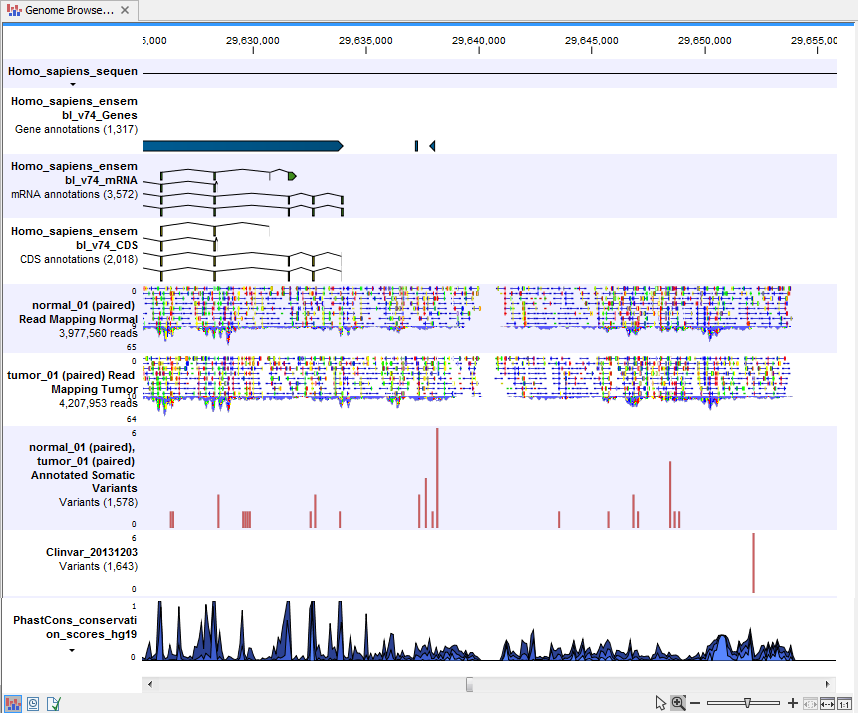

A simple, rapid, and accurate means of NGS data analysis will ultimately propel HPV research and serve a broad range of applications from discovery to therapeutics. We aimed to develop and test automated workflows for HPV taxonomic profiling and visualization within the CLC Microbial Genomics Module (MGM) plugged into the main Workbench (WB).
#Clc sequence viewer reference software#
To circumvent these two daunting barriers (i.e., taxonomic structure and software), we customized the curated Papilloma Virus Episteme (PaVE) database for use in a user-friendly, GUI-based, commercial software for sequence analysis. Furthermore, the 15-rank format is inconsistent with that of open-source Quantitative Insights into Microbial Ecology (QIIME) popularly used for bacterial and fungal taxonomic analysis. In 2019, the ICTV taxonomic structure was revised from a 5-rank (1991–2017) to a 15-rank structure which imposes retooling of existing software and restructuring of reference database(s) for viral metagenomic analysis. Second, viral taxonomies based on the International Committee on Taxonomy of Viruses (ICTV) are subject to new revisions. This is compounded by disparate, open-source tools which are often command-line based and require advanced computational or coding skills. First, the enormous amounts of complex data generated from each sample is non-trivial. However, bioinformatics analysis remains a bottleneck. The wet lab portion of genomics research has become more streamlined, simpler, and accessible to the researcher. Since the commercialization of high-throughput sequencing (HTS) instruments in 2005, the variety and choices of sequencing technologies, chemistries, platforms, capacities, and kits have expanded exponentially. Recent advancements in next-generation sequencing (NGS) have actualized HPV virome profiling. The entire process named “HPV DeepSeq” provides a simple, accurate and practical means of NGS data analysis for a broad range of applications in viral research. Integrating clinically relevant, taxonomized HPV reference genomes within automated workflows proved to be an ultra-fast method of virome profiling. Biodiversity analysis between low- (LSIL) and high-grade squamous intraepithelial lesions (HSIL) revealed loss of species richness and gain of dominance by HPV-16 in HSIL. Tabular output conversion to visualizations entailed 1–2 keystrokes. Low-grade ( n = 95) and high-grade ( n = 60) Pap smears were tested with ensuing collective runtimes: Taxonomic Analysis (36 min) Alpha/Beta Diversities (5 s) Map Reads (45 min). HPV genomes from Papilloma Virus Episteme were customized and incorporated into CLC “ready-to-use” workflows for stepwise data processing to include: (1) Taxonomic Analysis, (2) Estimate Alpha/Beta Diversities, and (3) Map Reads to Reference. To address this, we developed and tested automated workflows for HPV taxonomic profiling and visualization using a customized papillomavirus database in the CLC Microbial Genomics Module. However, viral computational analysis remains a bottleneck due to semantic discrepancies between computational tools and curated reference genomes. Next-generation sequencing (NGS) has actualized the human papillomavirus (HPV) virome profiling for in-depth investigation of viral evolution and pathogenesis.


 0 kommentar(er)
0 kommentar(er)
